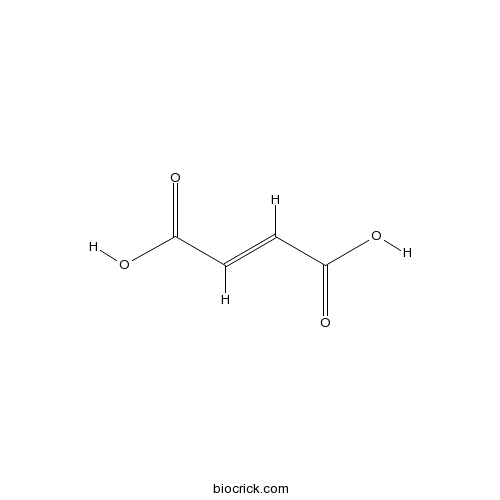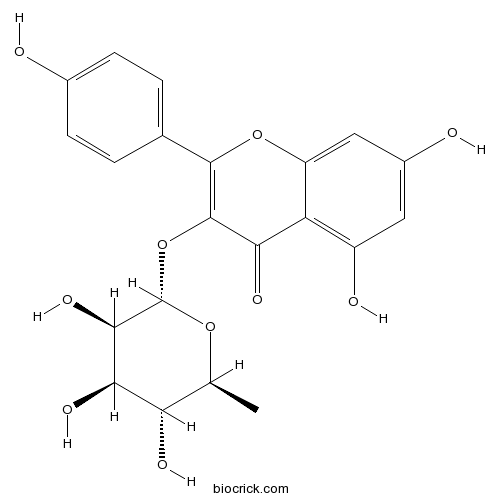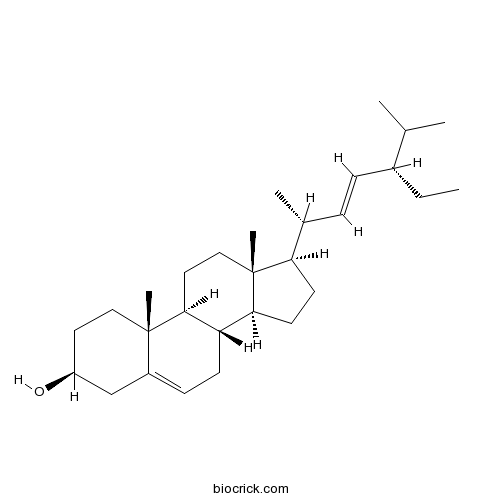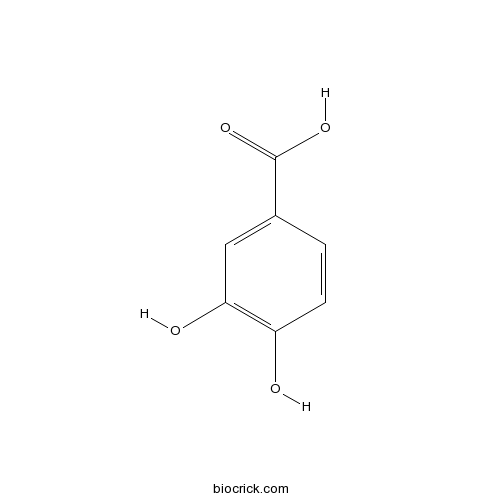Emilia sonchifolia
Emilia sonchifolia
1. The products in our compound library are selected from thousands of unique natural products; 2. It has the characteristics of diverse structure, diverse sources and wide coverage of activities; 3. Provide information on the activity of products from major journals, patents and research reports around the world, providing theoretical direction and research basis for further research and screening; 4. Free combination according to the type, source, target and disease of natural product; 5. The compound powder is placed in a covered tube and then discharged into a 10 x 10 cryostat; 6. Transport in ice pack or dry ice pack. Please store it at -20 °C as soon as possible after receiving the product, and use it as soon as possible after opening.
Natural products/compounds from Emilia sonchifolia
- Cat.No. Product Name CAS Number COA
-
BCN5989
Fumaric acid110-17-8
Instructions

-
BCN2766
Isodemethylwedelolacton350681-33-3
Instructions

-
BCN5573
Afzelin482-39-3
Instructions

-
BCN5672
Wedelolactone524-12-9
Instructions

-
BCN4211
Uracil66-22-8
Instructions

-
BCN4376
Stigmasterol83-48-7
Instructions

-
BCN4537
3,4-Dihydroxybenzoic acid99-50-3
Instructions

Two distinct begomoviruses associated with an alphasatellite coinfecting Emilia sonchifolia in Thailand.[Pubmed: 29435710]
Emilia sonchifolia is a traditionally used medicinal plant that is widespread in tropical and subtropical regions of the world. Yellow vein symptoms were observed in E. sonchifolia plants in fields in the county of Koh Samui, Surat Thani Province, Thailand, in August 2015. Two distinct begomoviruses, designated TH4872-6 and TH4872-9, and an associated alphasatellite were obtained from an E. sonchifolia leaf sample (TH4872). Sequence analysis showed that the full-length sequence of TH4872-6 was most closely related to that of ageratum yellow vein China virus (AYVCNV), with 85.7% identity, suggesting that it is a novel begomovirus, while the TH4872-9 sequence closely resembled cotton leaf curl Multan virus (CLCuMuV) with 99.1% identity. The alphasatellite sequence showed the highest nucleotide sequence identity (92.8%) to an isolate of tobacco curly shoot alphasatellite (TbCSA) originating from China. Recombination analysis revealed that the isolate TH4872-6 is a potential recombinant begomovirus, derived from ageratum yellow vein virus (AYVV) and tobacco leaf curl Thailand virus (TbLCTHV). This study represents the first report of begomoviruses identified in E. sonchifolia in Thailand.
Evaluation of the anti-inflammatory and urotoxicity ameliorative effects of γ-humulene containing active fraction of Emilia sonchifolia (L.) DC.[Pubmed: 29224178]
In folklore medicine, the plant Emilia sonchifolia, belonging to the family Asteraceae, is used for treating tumour and inflammation. In our previous studies, we have done a thorough phytochemical investigation of E. sonchifolia with a report on its potent antimetastatic activity. Further, we isolated and characterised its active fraction (AFES) containing the major compound γ-humulene with an evaluation of the antiangiogenic effect of AFES (5 mg/kg b.wt.). In the first part of the present study, AFES in different concentrations was used for the assessment of its possible anti-inflammatory effect employing three in vivo inflammatory models. Further using the most effective concentration of AFES 5 mg/kg b.wt, its effect on proinflammatory cytokine levels was recorded along with a confirmatory gene expression analysis. The results manifested with a reduction in the paw oedema significantly decreased levels of proinflammatory cytokines, C-reactive protein, nitric oxide and also there was an efficient downregulation of cyclooxygenase-2 and inducible nitric oxide. Urotoxicity is one of the major side effects of conventional chemotherapy. So in the second part of the study, we used AFES in combination with the conventional therapeutic agent cyclophosphamide in vivo in mice. The effect of AFES on urotoxicity was assessed from various biochemical parameters, cytokine markers and finally with a histopathology of the bladder. The current study revealed the protective effects of AFES, implicating reduced levels of urea nitrogen, by revamping of glutathione and marker cytokine levels towards positive amelioration. The results obtained altogether proved the safeguarding effect of AFES in murine experimental models.
Condensation patterns of prophase/prometaphase chromosome are correlated with H4K5 histone acetylation and genomic DNA contents in plants.[Pubmed: 28854212]
Mitotic prophase chromosome condensation plays an essential role in nuclear division being therefore regulated by highly conserved mechanisms. However, degrees of chromatin condensation in prophase-prometaphase cells may vary along the chromosomes resulting in specific condensation patterns. We examined different condensation patterns (CPs) of prophase and prometaphase chromosomes and investigated their relationship with genome size and distribution of histone H4 acetylated at lysine 5 (H4K5ac) in 17 plant species. Our results showed that most species with small genomes (2C < 5 pg) (Arachis pusilla, Bixa orellana, Costus spiralis, Eleutherine bulbosa, Indigofera campestris, Phaseolus lunatus, P. vulgaris, Poncirus trifoliata, and Solanum lycopersicum) displayed prophase chromosomes with late condensing terminal regions that were highly enriched in H4K5ac, and early condensing regions with apparently non-acetylated proximal chromatin. The species with large genomes (Allium cepa, Callisia repens, Araucaria angustifolia and Nothoscordum pulchellum) displayed uniformly condensed and acetylated prophase/prometaphase chromosomes. Three species with small genomes (Eleocharis geniculata, Rhynchospora pubera, and R. tenuis) displayed CP and H4K5ac labeling patterns similar to species with large genomes, whereas a forth species (Emilia sonchifolia) exhibited a gradual chromosome labeling, being more acetylated in the terminal regions and less acetylated in the proximal ones. The nucleolus organizer chromatin was the only chromosomal region that in prometaphase or metaphase could be hyperacetylated, hypoacetylated or non-acetylated, depending on the species. Our data indicate that the CP of a plant chromosome complement is influenced but not exclusively determined by nuclear and chromosomal DNA contents, whereas the CP of individual chromosomes is clearly correlated with H4K5ac distribution.
Evaluation of Antiangiogenic Efficacy of Emilia sonchifolia (L.) DC on Tumor-Specific Neovessel Formation by Regulating MMPs, VEGF, and Proinflammatory Cytokines.[Pubmed: 27146127]
Formation of new blood vessels from preexisting vasculature is an indispensable process in tumor initiation, invasion, and metastasis. Novel therapeutic approaches target endothelial cells involved in the process of angiogenesis, due to their genetic stability relative to the rapidly mutating drug-resistant cancer cells. In the present study, we investigated the effect of an active fraction from Emilia sonchifolia, belonging to the family Asteraceae, a plant well known for its anti-inflammatory and antitumor effects, on the inhibition of tumor-specific angiogenesis. Administration of the active fraction from E sonchifolia (AFES; 5 mg/kg, body weight, intraperitoneally) containing the major compound γ-humulene significantly inhibited B16F10 melanoma-induced capillary formation in C57BL/6 mice. The level of serum vascular endothelial growth factor and serum proinflammatory cytokines such as interleukin-1β, interleukin-6, tumor necrosis factor-α, and granulocyte-macrophage colony-stimulating factor were also reduced significantly. At the same time, administration of AFES significantly enhanced the production of antiangiogenic factors such as tissue inhibitor of matrix metalloproteinase-1. Dose-dependent reduction can be seen in the budding and expansion of microvessels from rat thoracic aorta by AFES treatment. Inhibition of the activation of proenzyme to active enzyme of matrix metalloproteinase along with a successful reduction of proliferation, invasion, and migration of human umbilical vein endothelial cells demonstrated the antiangiogenic effect of AFES in vitro. To date, no study has examined the antiangiogenic activity of this plant with already well-known anti-inflammatory and antitumor effects. Results obtained in the present study by using both in vivo and in vitro angiogenic models altogether proved the inhibitory effect of AFES on tumor-specific neovessel formation.
Inhibition of pulmonary metastasis by Emilia sonchifolia (L.) DC: An in vivo experimental study.[Pubmed: 26926173]
Emilia sonchifolia (L.) DC is a widely distributed medicinal herb used mainly in the indigenous Ayurvedic system of medicine in India. This plant is one among the ten sacred plants of Kerala state in India, collectively known as Dasapushpam.
Immune response modulatory effect of Emilia sonchifolia (L.) DC: an in vivo experimental study.[Pubmed: 26280169]
This study was performed in order to provide a scientific basis for the conventional use of Emilia sonchifolia in the traditional Indian Ayurvedic medicine possibly through modulation of the host immune defense.
Emilia sonchifolia extract activity against white spot syndrome virus and yellow head virus in shrimp cell cultures.[Pubmed: 26203887]
Emilia sonchifolia (L.) DC is a plant used in traditional medicine to treat several viral and bacterial diseases. The antiviral activities of selected Sephadex LH-20 column fractions and HPLC subfractions of an acetone extract of E. sonchifolia leaves were determined in shrimp Penaeus merguiensis primary lymphoid cells infected with either white spot syndrome virus (WSSV) or yellow head virus (YHV). WSSV and YHV replication was quantified using quantitative real-time PCR tests targeted to the VP19 and ORF1b gene transcripts, respectively. In lymphoid organ cells exposed to 100 µg ml⁻¹ of either the Sephadex fraction F14 or the HPLC F14 subfraction SF4, both fractions caused reduced replication, but YHV replication was reduced only by SF4. In the asthiazolyl blue mitochondrial enzyme activity assays to assess extract cytotoxicity, >60% of primary lymphoid organ cells remained viable following exposure to 100 µg ml⁻¹ of either F14 or SF4. GC-MS analysis of the HPLC F14 subfraction SF4 showed that it contained 2,4-di-tert-butylphenol. This study is the first to show that E. sonchifolia leaf extracts might be useful as bioactive agents to protect shrimp against viruses such as WSSV and YHV.
Performance of Bemisia tabaci (Genn.) Biotype B (Hemiptera: Aleyrodidae) on Weeds.[Pubmed: 27194066]
Bemisia tabaci (Genn.) biotype B (Hemiptera: Aleyrodidae) is regarded as a pest with a large number of hosts, including crops and weeds. The performance of this whitefly on seven weeds was evaluated in order to identify the most suitable host. The following weeds that are very common in intense agricultural areas in the state of São Paulo, Brazil, were selected for this study: spurge (Euphorbia heterophylla), beggarticks (Bidens pilosa), red tasselflower (Emilia sonchifolia), small-flower galinsoga (Galinsoga parviflora), pigweed (Amaranthus viridis), black nightshade (Solanum americanum), and morning glory (Ipomoea sp.). In free-choice tests, adult preference and oviposition were greatest on spurge. In contrast, morning glory was the least attractive and least oviposited plant. In assays carried out for egg-adult development, egg viability was greater than 87% over all weeds, whereas nymph viability ranged from 74 to 97%. The developmental period from egg to adult ranged from 26.7 to 49.1 days among the hosts under study. The lowest nymph density rate was observed for beggarticks and morning glory. Cluster analysis resulted in a single group formed by spurge, indicating its superiority as a host for B. tabaci biotype B. Even though the parameters evaluated indicate that spurge is the most suitable host among the weeds, all the others allow the reproduction of B. tabaci biotype B. For this reason, they should be observed during cropping and the intercrop period in areas infested by this whitefly.
Selection of nectar plants for use in ecological engineering to promote biological control of rice pests by the predatory bug, Cyrtorhinus lividipennis, (Heteroptera: Miridae).[Pubmed: 25254377]
Ecological engineering for pest management involves the identification of optimal forms of botanical diversity to incorporate into a farming system to suppress pests, by promoting their natural enemies. Whilst this approach has been extensively researched in many temperate crop systems, much less has been done for rice. This paper reports the influence of various plant species on the performance of a key natural enemy of rice planthopper pests, the predatory mirid bug, Cyrtorhinus lividipennis. Survival of adult males and females was increased by the presence of flowering Tagetes erecta, Trida procumbens, Emilia sonchifolia (Compositae), and Sesamum indicum (Pedaliaceae) compared with water or nil controls. All flower treatments resulted in increased consumption of brown plant hopper, Nilaparvata lugens, and for female C. lividipennis, S. indicum was the most favorable. A separate study with a wider range of plant species and varying densities of prey eggs showed that S. indicum most strongly promoted predation by C. lividipennis. Reflecting this, S. indicum gave a relatively high rate of prey search and low prey handling time. On this basis, S. indicum was selected for more detailed studies to check if its potential incorporation into the farming system would not inadvertently benefit Cnaphalocrocis medinalis and Marasmia patnalis, serious Lepidoptera pests of rice. Adult longevity and fecundity of both pests was comparable for S. indicum and water treatments and significantly lower than the honey solution treatment. Findings indicate that S. indicumis well suited for use as an ecological engineering plant in the margins of rice crops. Sesame indicum can be a valuable crop as well as providing benefits to C. lividipennis whilst denying benefit to key pests.
[Chemical constituents contained in aerial parts of Emilia sonchifolia].[Pubmed: 23397723]
To study the chemical constituents contained in ethanol extracts from aerial parts of Emilia sonchifolia.


